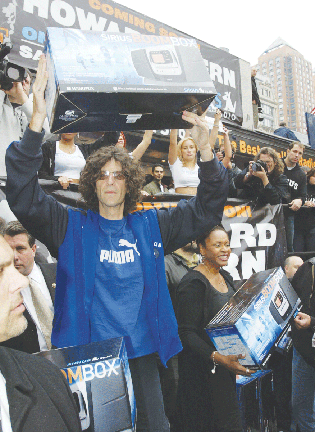REVIEW: Battle Royale
October 28, 2004
Battle RoyaleAka: Batoru Rowaiaru2000Director – Kinji FukasakuUnrated – 122 min. “One dead. 41 to go.”
Are your bored to tears because the US movie market isn’t fulfilling your insatiable need for guts, sans the glory? Then it is highly recommended that you pay a little extra special attention to the Asian cinema section of your local movie store. Whereas horror movies here in the US peaked, by their willingness to sink to such uncharted lows, some time in and around the late 70s, Asian cinema, specifically Japanese, is as productive as ever with many of its titles experiencing significant crossover success. Next time you’re in an Asian imports merchandise store buying that adorable little Hello Kitty lunchbox that you need so desperately to complete your collection, try giving the movie section a view and keep your eyes pealed for the ones with the most red splatter on the back cover. Better yet, talk to the store owner about some of the more popular Asian horror films and he’ll probably point you to titles such as: Ringu (remade as The Ring in the US), Ichi the Killer, Ju-on (remade as The Grudge in the US), Dark Water, or this week’s feature: Battle Royale.
Set in the not-too-distant future Japan, Battle Royale’s basic plot is relatively simple. Japan’s economy has weakened and while the adults have been scrambling to get their society back in order they have also been experiencing an increase in violent crimes at the hands of the nation’s neglected youth. The adults have taken action and decided that the best solution is to instead let the children kill each other and thus the Millennium School Reform Act is passed. Every year a random ninth grade class is chosen. They are flown to a secret island, each given a duffle bag with necessities, and are then fitted with tracking devises that are placed around their necks. The rules: kill everyone within the three-day time limit or else the tracking devices placed around their necks will explode and everyone loses. This makes meeting new friends on the island a little difficult, as you’ll eventually just have to put a hatchet in their face. Surprisingly, Battle Royale is not quite as graphic as it easily could have been, but instead focuses more on the relationships that the children are forced to develop having been placed in such a situation. This creates an odd mixture of teenage gossip about crushes and petty name-calling, paired with brutal and unrelenting scenes of violence. But as we get to learn who each of these characters are and the lives they’ve lived before coming to the battle, and though we may have a hard time keeping track of their individual names (there are 44 students and their names are Japanese, so cut me some slack, but do look out for Chiaki Kuriyama who played Gogo in Kill Bill vol. 1), we start to see a deeper maturity in the children than we do in the adults who somehow have made an attempt to govern them. Every time another student dies the screen flashes with the student’s name, gender, and number of remaining living students. This game-show-like atmosphere gives us the somewhat adult perspective and directly conflicts with the children’s very real lives that are being sacrificed at their own expense. You may be able to see the Battle Royale as almost an exact parallel to the situation they had previously just left. The children have become murderous killers, less as a result of an inherent corrupt morality, but instead as a product of their environment. This holds true both on the secret island of Battle Royale and back on the island of Japan itself.
But many of Battle Royale’s audience responded differently. After becoming a box office smash in Japan it was soon pulled from theaters after several different defender-of-public-decency groups complained. Banned in Singapore until an edited version was released (the bootleg copy I own proudly proclaims “Banned in America” but I suspect this is a bit of sensationalism), Battle Royale will most likely not receive very wide distribution in the US following in our post-Columbine world. In the meantime, look for the import. Just be warned that many import tapes and DVDs have a different region code and may be made for different TV systems, and therefore will not play on US machines. Bottom line: NTSC and region 1 – good. PAL and any other region number – bad.






















































